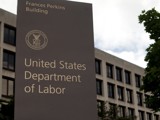Webinar Recap | US DOL's New Salary Exemption Threshold
We discussed the U.S. Department of Labor's April 23 final ruling on amending who is exempt from FLSA's minimum wage and overtime rules.

Webinar Recap | US DOL's New Salary Exemption Threshold
On May 2, Adams Keegan’s Charles Rodriguez and Brandon Roland discussed the U.S. Department of Labor's (DOL) final ruling on amending who is exempt from the Fair Labor Standards Act’s (FLSA) minimum wage and overtime rules. Our experts reviewed the new requirements and timelines, how to audit your potential impact, and effectively communicate changes.
Missed the conversation? Click here for the full webinar.
How we got here
In 2016, the DOL proposed a significant increase to the salary threshold, aiming for a 40% raise, reaching around $60,000. This proposal included an automatic escalator every three years. However, it was abandoned with the change in administration. In 2019, the DOL introduced a new rule, aligning the threshold with the 20th percentile of the lowest census region. Now, the latest DOL rule splits the difference, setting the threshold at 35% and incorporating the three-year escalator.
Provisions of the new rule
The new rule is projected by the DOL to impact around four million individuals, including approximately 300,000 highly compensated employees (HCEs). This represents a significant shift in wage distribution, amounting to approximately $1.5 billion. Until July 1, employers bear the responsibility of compliance and, thus, understanding the basic vocabulary is crucial. Employees are defaulted as non-exempt, and employers should consider exemptions based these three criteria:
- What is the employee's payment method?
- What amount is the employee paid?
- What are the job duties of the employee?
With white-collar exemptions remaining unchanged, employers must accurately assess employee eligibility based on these guidelines, ensuring adherence to criteria for exempt status.
The two-stage approach
The new rule implements a two-stage approach. Starting July 1, the salary threshold for exemption rises to $844 per week, annualizing at $43,888. By January 1, 2025, it increases further to $1,128 weekly, reaching $58,656 annually. Additionally, HCEs face a separate trajectory. Currently at $107,432 annually, their threshold rises to $132,964 by July 1, 2024, and further to $151,164 by January 1, 2025. This nuanced approach acknowledges regional wage variations and aims to align with similar federal standards. Employers should assess exempt duties thoroughly to ensure compliance and consider alternative exemptions to navigate salary adjustments effectively.
Next steps for employers
Employers now face crucial decisions in light of the impending changes. By July 1, 2024, they must assess affected employees and decide whether salary adjustments or reclassifications are necessary. Evaluating overtime frequency and job duties is critical in determining the best course of action. While transitioning employees from exempt to non-exempt status may seem like a downgrade, it ensures fair compensation for overtime work.
Alternatively, some may opt to increase salaries to maintain exemption status, albeit with higher financial commitments. Employers should communicate changes to employees transparently and proactively, prioritizing fairness and compliance. Additionally, they must consider state-specific regulations and provide adequate notice to affected staff, adhering to legal and ethical standards throughout the process. Consistency in treatment and communication is key to mitigating potential concerns and fostering trust within the workforce.
Opposition and possible legal challenges
The ruling has sparked significant opposition, with various stakeholders voicing strong dissent. Thus, legal challenges are anticipated, with federal courts expected to be battlegrounds for litigation. However, as the July 1 deadline nears, it is advised that employers are prepared to comply while staying abreast of potential legal and regulatory challenges in the coming months.
The conversion also answered common questions from audience members concerning the new rule, such as whether or not the rule applies to nonprofit organizations, what to do if an employee disagrees with a classification change, how the rule affects remote workers, and more.
Take a deep dive into the discussion and give yourself about 45 minutes to become fully engaged in the webinar.


Posted:
Adams Keegan